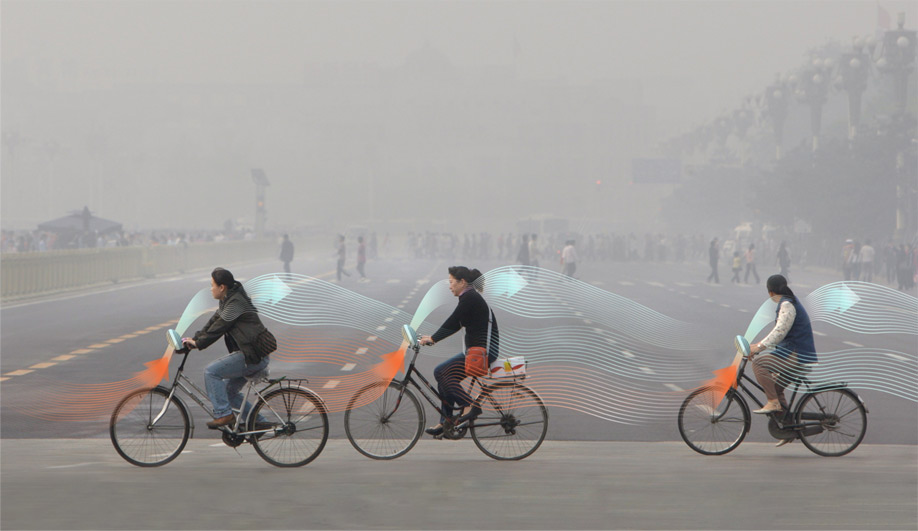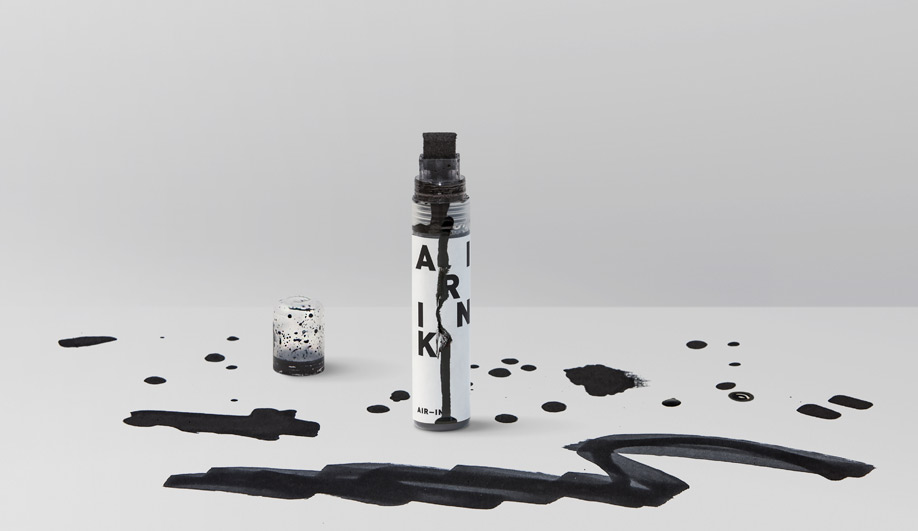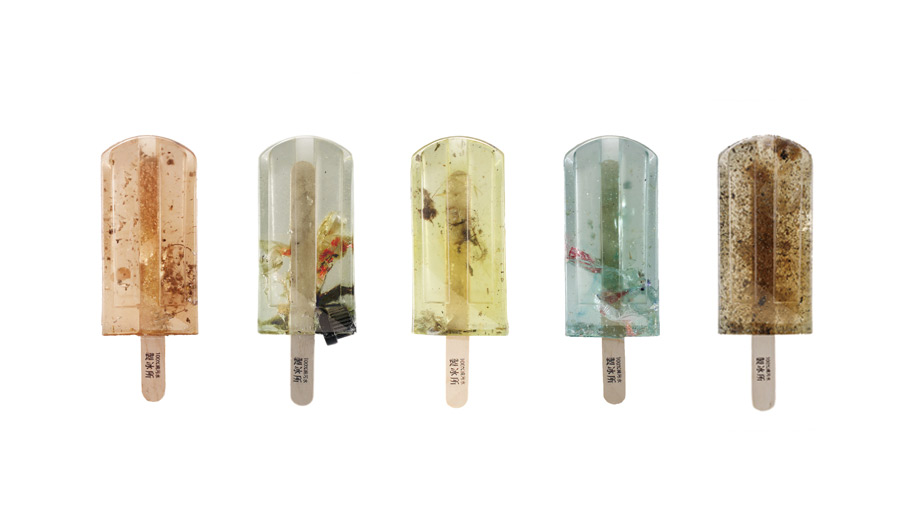
A new report reveals one in six deaths can be linked to pollution. So what can be done? Here are five projects that, in their own modest ways, aim to educate us on the scourge of pollution.
When it comes to air pollution, the numbers are staggering. A Lancet report released in October found that in 2015, pollution was the biggest environmental cause of early death – globally. One in six deaths could be linked to pollution. Worse still, contaminated air was the biggest offender, with 6.5-million deaths related to poor air quality. Unsurprisingly, countries that are heavily reliant on manufacturing, like China, India and Pakistan, are being hit the hardest.
Yet global problems often foster design solutions. Here are five projects that have caught our attention, and that aim to educate, engage, and even protect us, against the scourge of pollution.

1 Air-Ink
Graviky Labs of Bangalore in India has turned air pollution into a material for art and writing. Stripped of its heavy metals and carcinogens, vehicle exhaust is the same carbon powder used to make India ink. Using proprietary technology, Graviky captures carbon from tailpipes, treats it and turns it into five grades of ink (for screen printing, markers and more). One pen reuses 45 minutes’ worth of driving emissions. This process won’t offset global emissions, but, as company co-founder Nikhil Kaushik says, “It’s about unlearning the man-made concept of ‘waste’.”
Graviky Labs has also developed an Air-Ink that can be used on textiles. At this year’s Dutch Design Week, designer Kelly Gijsen unveiled a range of organic cotton scarves pattered with Graviky’s ink. Each scarf, says Gijsen, used roughly 150 minutes of vehicle pollution.

2 Smog Free Bicycle
Dutch artist Daan Roosegaarde continues his efforts to make pollution visible. His latest idea is the Smog Free Bicycle, which hoovers up dirty air through a device mounted on the handlebars. As cyclists pedal, the device blows clean air around them. “Beijing used to be an iconic bicycle city,” says the eco-innovator. “We want to bring that culture back as a step toward smog-free cities.” Though it is still a concept, the bike would send highly visible reminders of smog-busting efforts and make the air a little bit more breathable in the process.
Roosegaarde also developed the Smog Free Tower, a seven-metre tall air purifier, and the Smog Free ring, made from reconstituted pollutants, which he displayed at Toronto’s EDIT: Expo for Design, Innovation + Technology.

3 Pollution Popsicles
As a creative way to ensure the problem of pollution is never out of mind, a team of students at National Taiwan University of Arts collected polluted samples from rivers, lakes and ports around Taiwan, then replaced the water with transparent resin. The resulting sludge was cast into unpalatable popsicles that invite the question, “Would you eat this?” The team released 100 decorative popsicles in all, each in a unique numbered wrapper.

4 O2Today Masks
O2Today is a venture-backed product designed by Marcel Wanders. It is a twist on the pollution mask commonly worn in Asian countries – in Seoul, for example, they frequently worn when polluted dust blows into the city – that’s built for urban life. Unlike most facemasks that are intended for medical or industrial usage, O2Today is built for breathability and style, all while offering protection that betters most N95 masks. It blocks out 97 per cent of air particulates while being two to five times easier to breathe, the company says.
Made from responsibly sourced New Zealand Merino wool, which is comfortable, but there’s a sad reality at play, here: we’d rather be wearing no mask at all.

5 The Water T-Shirt
In order to visualize the effect of water pollution, London product development studio The Unseen created an ingenius – and frankly, beautiful – T-shirt that changes colour when it comes into contact with polluted agua. The cotton and hemp fabric, coloured using a cabbage dye, begins its life in a shade of purple. As it comes into contact with polluted water, it reveals the pH levels, turning green when in contact with alkaline and red in reaction to acid. The shirt is visual indicator of the acid rain or contaminated wastewater you’re exposed to.




